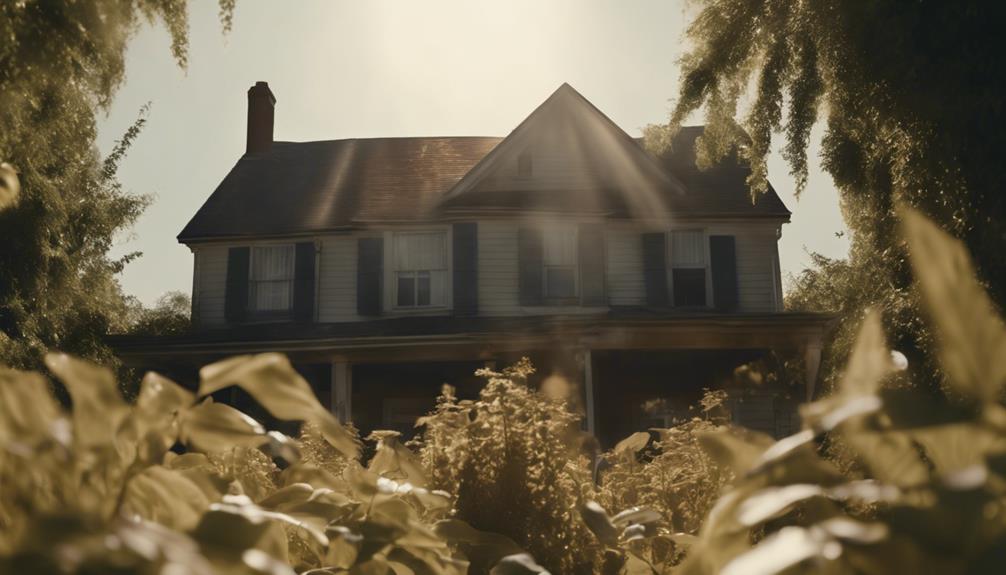
To shield your home from the Phoenix sun’s relentless heat, start by evaluating your roof’s age and condition, looking out for missing shingles or tiles. If it’s time for an upgrade, consider heat-resistant materials like metal roofing for its significant properties or tiles like clay for natural insulation. You’ll also want a Phoenix roofing company stay on top of regular maintenance, ensuring twice-yearly inspections and keeping gutters clear to prevent moisture buildup. Additionally, enhancing your attic’s ventilation and insulation can play an important role in keeping your home cool, while installing reflective coatings can further protect against extreme heat.
By following these steps, you’ll not only increase your roof’s resilience but also discover more ways to safeguard your home against the harsh sun.
Key Takeaways
– Opt for heat-resistant materials like metal roofing or clay tiles to reflect sunlight and reduce heat absorption.
– Enhance attic insulation and ventilation to prevent heat buildup and extend roof life.
– Apply reflective roof coatings, such as acrylic or silicone, to further combat extreme heat.
– Conduct regular maintenance, including inspections and cleaning, to prevent damage from exacerbating under high temperatures.
– Ensure gutters are clear to prevent moisture issues that can weaken the roof structure over time.
Assessing Roof Vulnerability
Before taking any important measures, it’s essential to evaluate your roof’s vulnerability to extreme heat. You’ve got to understand that not all roofs are created equally when it comes to withstanding the scorching sun. First off, consider your roof’s age. Older roofs tend to be more susceptible to damage since materials degrade over time, losing their reflective properties and becoming less effective at repelling heat.
Next, you’ve got to look at the current condition. Are there missing shingles or tiles? Cracks or leaks? These can be telltale signs that your roof mightn’t hold up well under intense heat. It’s also critical to check the color and material of your roof. Darker colors absorb more heat, and certain materials can amplify the effects of high temperatures.
Lastly, think about the insulation and ventilation in your attic. Poor insulation can trap heat inside, making your cooling system work overtime and potentially worsening the condition of your roof. Good ventilation helps to dissipate heat, keeping both your home cooler and prolonging the life of your roof. By evaluating these aspects, you’ll have a clearer picture of your roof’s current state and what steps you need to take next.
Choosing Heat-Resistant Materials
When protecting your roof from extreme heat, choosing heat-resistant materials is an essential step to guarantee long-term durability and efficiency. You’ve got a range of options, each with its own benefits, but not all are created equal when it comes to battling the scorching sun.
Metal roofing stands out for its reflective properties, bouncing back solar radiation instead of absorbing it. This not only keeps your home cooler but also reduces the strain on your cooling systems.
Tiles, especially clay or concrete, offer a natural insulation layer. Their shapes allow air circulation, which dissipates heat more efficiently than flat surfaces.
Rubber roofing, particularly EPDM (ethylene propylene diene terpolymer), is another effective choice. It’s not just about resisting heat; this material can also withstand UV rays, which often contribute to material degradation over time. Coatings can further enhance this resistance. Applying a reflective or insulating coating can significantly lower your roof’s temperature.
Implementing Regular Maintenance
After selecting heat-resistant materials for your roof, it’s important to carry out regular maintenance to guarantee its longevity under extreme heat conditions.
You’ll want to start with inspections. At least twice a year, you should inspect your roof for any signs of wear or damage. This includes looking for cracked tiles, loose shingles, or any other areas that might let heat or moisture seep in. Don’t wait for leaks to appear inside your home before you act. Catching issues early can save you a lot of trouble and money down the line.
Cleaning your roof is another critical step. Debris like leaves, twigs, and dirt can accumulate over time, retaining moisture and potentially causing damage under the relentless sun. Make sure you clear these away regularly to prevent any buildup.
Don’t overlook your gutters, either. Keeping them clean and clear of blockages ensures that water can freely flow away from your roof, preventing any water damage that could weaken your roof’s structure.
Enhancing Ventilation and Insulation
Enhancing your roof’s ventilation and insulation can greatly decrease heat accumulation, guaranteeing a cooler and more comfortable home environment. Proper attic ventilation allows hot air to escape, reducing the temperature underneath your roof. This isn’t just about comfort; it’s also about extending the life of your roofing materials, which can degrade more quickly under extreme heat.
To start, consider adding more vents or upgrading existing ones. Ridge vents along the peak of your roof work well in tandem with soffit vents at the eaves, creating an efficient airflow that pulls cool air in and pushes hot air out.
Don’t overlook the importance of insulation, either. It acts as a barrier, keeping the cool air inside your home and the blistering heat out. Upgrading your attic’s insulation can significantly reduce your cooling costs and make those scorching summer days more bearable.
Installing Reflective Roof Coatings
In addition to improving ventilation and insulation, installing reflective roof coatings is another effective strategy to combat the effects of extreme heat on your home. These coatings are specifically designed to reflect more sunlight and absorb less heat than a standard roof, leading to a cooler home and significant energy savings during those scorching summer months.
Reflective coatings aren’t just a one-size-fits-all solution; they come in various types, each with its own benefits. Here’s a quick comparison to help you decide:
| Type | Reflectivity | Durability | Cost |
|——|————–|————|——|
| Acrylic | High | Moderate | Low |
| Silicone | Medium | High | Medium |
| Polyurethane | Low | High | High |
Applying these coatings is straightforward, but choosing the right one for your roof material and climate is crucial. Acrylic coatings, for instance, are great for most climates and are the most cost-effective. Meanwhile, silicone coatings offer superior durability, making them ideal for areas with heavy rainfall. Polyurethane coatings, though the most expensive, provide excellent resistance against physical damage and are best for industrial settings.
Don’t underestimate the power of a reflective roof coating. Making a smart investment in the right type will keep your home cooler, reduce your energy bills, and extend the lifespan of your roof.


